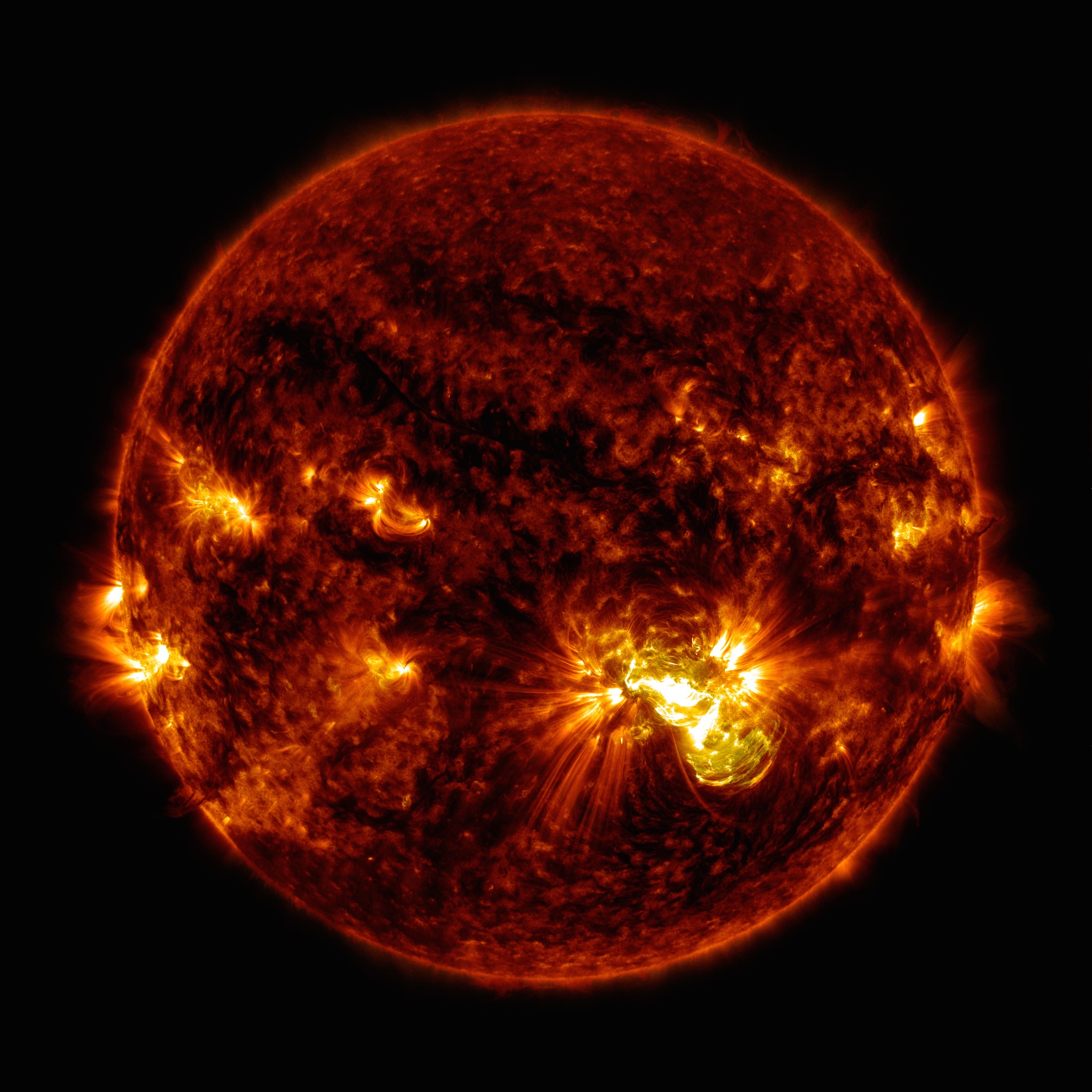Strange Days On The Sun
On October 18, 2014, a gigantic sunspot on the lower half of the sun rotated into view of NASA’s Solar Dynamics Observatory, or SDO, spacecraft. The sunspot measured 80,000 miles across—big enough to engulf at least a dozen Earths and larger than any seen in more than two decades. With temperatures around 7,000°F, sunspots are relatively cooler areas on the sun. In images taken at visible wavelengths they appear as dark spots on the sun’s surface, hence their name. Over the next 14 days, the massive sunspot unleashed multiple bursts of radiation known as solar flares. Some of these flares were classified as X-class, the strongest type of flare. The mightiest X-class flares (degree is indicated by number, with 1 being the lowest) are by far the largest explosions in the solar system and are awesome to watch. See views of different eruptions captured by SDO in the video.

Powerful flares erupt from a supersized sunspot.
The five X-class flares highlighted in this video took place between Oct. 18 and Oct. 27, 2014.

An X3.1-class flare burst from the sun on Oct. 24, 2014, spewing light, energy and radiation out into space in all directions.

An X1.0-class flare erupted on Oct. 25, 2014. NASA’s SDO uses the teal color to represent some of the hottest material on the sun.

Earth is shown to scale with the X2.0-class flare observed on Oct. 27, 2014.
For More Information
See NASA.gov
Credits
Please give credit for this item to:
NASA's Goddard Space Flight Center
Images courtesy of NASA/SDO
-
Producers
- Scott Wiessinger (USRA)
- Genna Duberstein (USRA)
-
Writer
- Karen Fox (ADNET Systems, Inc.)
Release date
This page was originally published on Thursday, November 13, 2014.
This page was last updated on Wednesday, May 3, 2023 at 1:50 PM EDT.
